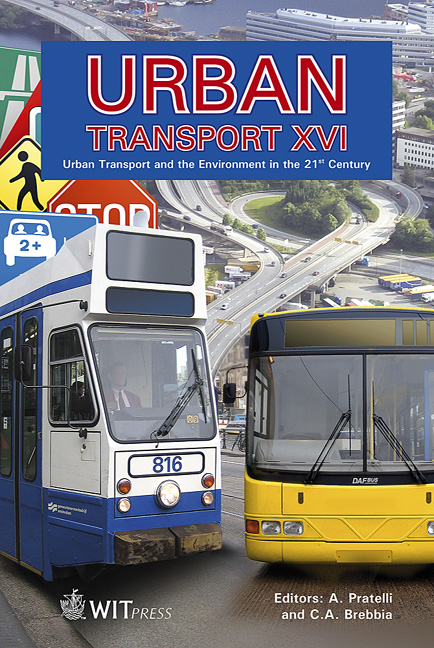Emission Tests In City Buses Under Real Road Conditions
Price
Free (open access)
Transaction
Volume
111
Pages
9
Page Range
181 - 189
Published
2010
Size
1,252 kb
Paper DOI
10.2495/UT100171
Copyright
WIT Press
Author(s)
J. Merkisz, M. Idzior, J. Pielecha & W. Gis
Abstract
The paper presents the results of real road emission measurements performed under real traffic conditions in the city of Poznan. The tests were carried out in the morning and afternoon hours. The conditions were pre-selected so as to ensure the highest possible reflection of the actual traffic conditions: passenger count on a given bus route that would reflect typical parameters for the Poznan routes. The tests were carried out over a period of two days (Friday, Saturday) characteristic of a very small and very high passenger count and high and medium traffic congestion. The objects of the tests were the buses manufactured by Solaris: one of the vehicles was fitted with a hybrid engine (Hybrid H18) and the other operated on a conventional drive train. The buses were selected based on their similarities in terms of passenger capacity and length. They were selected to enable a comparison of their functionality and environment friendliness under real road conditions (the engines complied with the Euro V standard). Keywords: emissions, diesel engine bus, hybrid bus, real road conditions. 1 Introduction European emission regulations for heavy-duty vehicles, contained in directive 1999/96/EC are commonly known as Euro I through V standards. Since October 2005 all homologation vehicles and since October 2006 all newly registered Heavy Duty Diesel vehicles – including buses – have had to comply with the Euro IV emission standard. Further standards such as Euro V will become binding from October 2008 and 2009 respectively. Another directive 2005/55/WE adopted in 2005 introduces an additional standard of EEV
Keywords
emissions, diesel engine bus, hybrid bus, real road conditions





